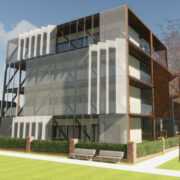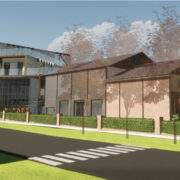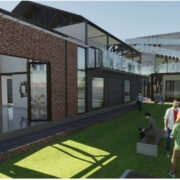Project: AMS Design
Submission Extract: Despite tightened building energy efficiency standards being implemented periodically in many countries, existing build-ings continually consume a momentous quota of the total prima-ry energy. Energy efficiency solutions range from material com-ponents to bulk systems. A technique of building construction, referred to as prefabricated architecture (prefab), is increasingly gaining traction amongst designers and builders alike. Prefab en-compasses the off-site fabrication of building components to a greater degree of finish as bulk building structures and systems, and their assembly on-site. In this context, prefab improves the speed of construction, quality of architecture, efficiency of ma-terials, and worker safety, whilst limiting the environmental im-pacts of construction, as compared to conventional site-built construction practices. From the building physics point of view, the bulk systems and tighter integration method of prefab mini-mizes thermal bridges. Quite recently, a 57 story skyscraper was built in 19 days in China, using prefabricated modules.This report demonstrates, how pre-fabricated modules, built off-site, can be cleverly arranged to make optimum use of a given site whilst integrating passive design strategies such as passive cool-ing and self shading. It also presents a multitude of combinations in which modular designed units can be configured, ranging from one bedroom units to two bedroom homes, offering flexibility in design to suit operator needs.The report provides evidence that modular construction has the potential to shorten project design and engineering time, reduce costs and improve construction productivity, suggesting that the installation of modular buildings is a cost-efficient, safe and eco-friendly project. It is envisaged that the scope of the work examined in this report will be of interest to building engineers, manufacturers, and energy experts, as well as serve as a founda-tional reference for future study of similar projects.
![]()












